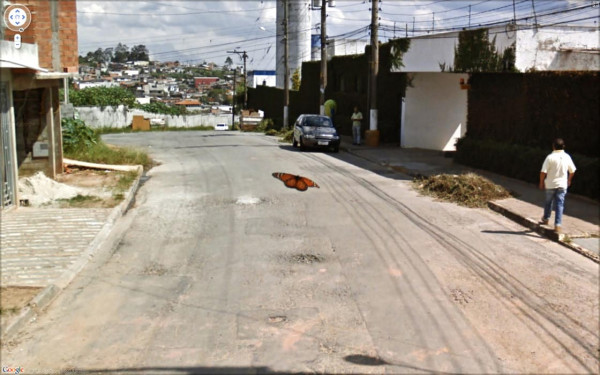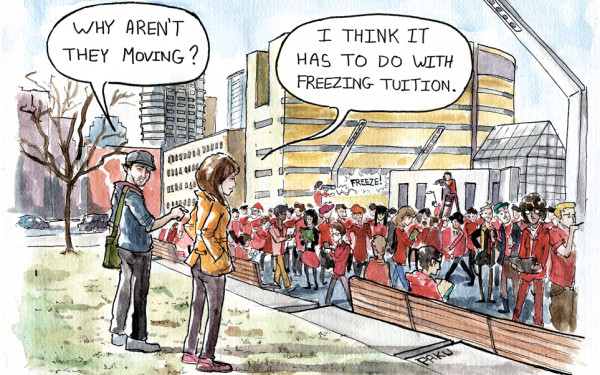Dirty Art: An Era of Imagery and Technology
JP King Exposes the Dirty Side of his Artistic Process
“I’m a scavenger and a thief,” said J.P. King. “And I take my position as a thief very proudly.”
King is a collage artist who dives into old magazines searching for interesting pictures and a writer that relies on other people’s anecdotes for the content of his stories. As such, his raw material is more often than not someone else’s finished work.
“In that sense, it’s like I have the blood of media history on my hands, because so much of my work does not originate from my own hands,” he added.
A reinventor of images, King’s art touches upon concepts of ownership and finality, asking questions that echo in the mashup music scene. “What is probably happening to our generation, as we are being educated by DJs and music culture, is that we begin to realize that everything is really just a leaping point for something else.” he said.
King’s upcoming exhibition, The Dirtiest Hands, will display his print work, featuring an accordion-fold 27-foot book that can be mounted on a wall, large dimension reproductions of miniature collages, free mini print books and free soap—which he said was “involuntarily donated by a local hotel.”
The name for the show works in more ways than the obvious dramatic metaphor. “Flipping through old magazines, your hands start to get filthy and a layer of historical residue builds up on them, so it works as a tactile thing also.”
And that’s where the soap comes in—repackaged with King’s own work. “It’s going to be a little limited edition art piece: citrus and mint hotel soap,” he said. As a “fun and playful gimmick,” 55 complimentary bars of soap and 77 mini print books will be handed out at the vernissage. “A lot of my work relies on print and reproduction and affordability, because so much of what I make is really inexpensive, and the people of who I make it for don’t necessarily have very much money, so the idea of producing products in an underground manner makes a lot of sense to me,” said King.
King is a graduate of Concordia’s creative writing program, with a minor in print media—a degree that he says was largely an excuse to get access to the fine arts department and its resources.
His art navigates fluidly from text to image. “I always [have] ten different projects on the go, and they sort of start on two different regions—either visually or textually,” he said. “I start writing something or collecting written fragments, or I’m collecting visual materials, collecting old magazines, books, textbooks, manuals and stuff like that.”
Lines, images and text come together in King’s black and white works, such as his 27-foot book, A Brief Report on the New and Prestigious Towne of Canada. “There’s something so textual about its graphic quality, its relation to text,” he said. “It becomes much easier to integrate [the images].” The book’s plotline originated from a collection of poems he wrote over a year ago.
With his colour work, however, the process is different. “I flip through [magazines], and look for images that are striking, connect with me somehow or where I can read a narrative,” he said. “There is almost this intuitive sense that it can expand into something more, that I can use it as the basis for an image. Once I find those, I don’t necessarily know what it’s going to look like, but I know that it can become something.”
Whenever he can find them, King uses images from international mid-century magazines. “Every once in a while I’ll hit a gold mine,” he said. “I found a box of maybe 10 or 15 Dutch fashion magazines in the garbage once, and they were totally incredible, but I’ve exhausted them now.
“And recently I found this guy who lives in Longueil who bought a bunch of old stock from a woman who runs a bookstore there, and she had an attic full of magazines, so he sold me almost ten boxes of old French magazines from the 1960s. So I have boxes upon boxes upon boxes of these beautiful magazines.”
Texture and quality of print and paper is what attracts King to magazines from the 1940s to the 1970s. It would be impossible, he said, to make the collages he does with material from magazines published today.
“A big part of my collage is sourcing the right aesthetic, using a certain era of imagery and a certain era of technology.”

2__900_601_90.jpg)
_600_832_s.png)

3__600_375_90_s_c1.jpg)
1_600_375_90_s_c1.jpg)

